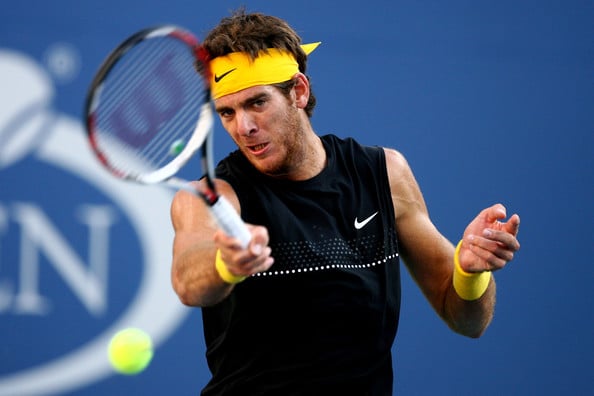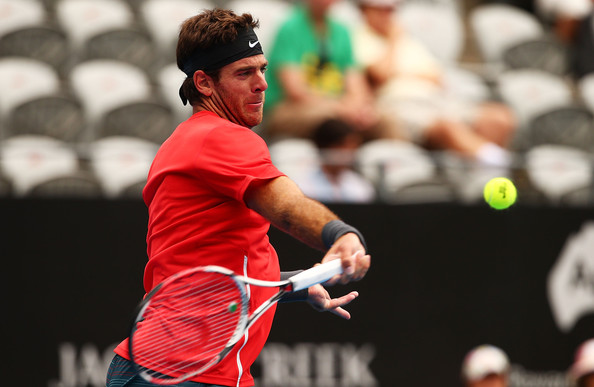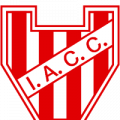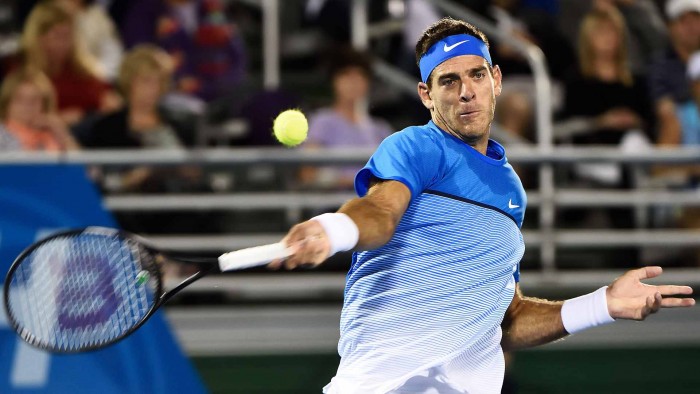Back in the days of Pete Sampras, Steffi Graf and Martina Navratilova, the most prevalent pattern of play in both men's and women's professional tennis was the iconic serve-and-volley tactic. But with the technological advancements made to both racquets and surfaces alike, the modern era of tennis has predominantly been dominated by power and spin. However, one shot continues to have the same effect in different ways as it did twenty years ago in modern-day tennis today, and that shot is none other than the forehand.
For countless years, the forehand has been one of the strongest shots in professional tennis, though the men have grown to use it more as an attacking shot than the women -- who predominantly prefer to dictate with their backhands. Twenty to thirty years ago, the forehand was viewed more as a building block to construct points with devestating effect but today, it possesses a ruthless consistency and a unique ability to get that first strike in rallies.
In the men's game today, fans have witnessed some of the greatest forehands to ever grace the sport. From Roger Federer's aesthetically pleasing forehand to Rafael Nadal's unique ability to generate an extraordinary amount of whip on his forehand, this shot has undoubtedly changed our sport forever, and definitely for the better.
However, there is one forehand that is arguably one of the best in the game, though it has been missing for quite some time, and that forehand belongs to none other than 2009 U.S. Open champion Juan Martin del Potro.

The former world number four has unfortunately fallen victim to a number of reoccuring wrist injuries in recent years, forcing him to undergo surgery multiple times if he ever wanted to compete professionally again. However, in his first tournament in eleven and a half months at the Delray Beach Open, del Potro looked healthy and poised to rebuild his career at the age of 27.
But one thing that had stayed the same from the time he won his maiden Grand Slam title to when he made his return in Delray Beach was his fearless forehand. From a technical standpoint, the Argentine is able to create a relatively flat stroke while generating an incredible amount of power and spin that when timed to perfection, can have devastating effects against any opponent, as shown in his wins over the likes of Roger Federer, Novak Djokovic and Rafael Nadal.
A Technical Breakdown of del Potro's Signature Stroke
Like all players who have achieved big things at the professional level, del Potro has incredibly early preparation for his signature stroke as soon as he recognizes that he needs to hit a forehand. When he takes the racquet back, one will notice that the Argentine uses a more unconventional and unorthodox grip. While the majority of his peers use a Western or Semi-Western grip on their forehands, del Potro uses more of an Eastern grip.

You see, back in the day, players used their ground strokes more to construct their points instead of getting that first strike like players do today, so they were able to use an Eastern grip to great effect. But due to the advancements in racquet technology, players are able to hit with more power and spin, making it harder for players with Eastern grips to adapt. Thankfully for del Potro, who stands at nearly two metres tall, he is able to get up and over the ball to unleash his powerful forehand.
In addition to the Argentine's grip, one might also notice that del Potro has a very high take back to wind up his swing, which is very common for players who are as big in stature as he is. As a result of his high take back, the former U.S. Open champion is forced to make contact with the ball higher than normal, making it a high risk, high reward type of stroke. What is most impressive is that the Argentine's right arm is almost completely straight through the point of contact, which allows for greater use of the muscles in his shoulder.
As he follows through, del Potro is able to generate an incredible amount of racquet head speed while keeping his racquet relatively straight through the point of trajectory, just before following through over his left shoulder or above his head if he is looking to give the ball more shape; all while performing a full unit turn with his upper body.
Why It's so Effective
Del Potro's forehand is incredibly effective for a number of reasons: he is equally dangerous on the run as he is when the ball is right in his strike zone, and "the sheer power of it all makes it difficult to counter," explained Roger Federer.
When given time to set up, del Potro is able to generate a lethal combination of depth, pace and spin, which already screams danger for his opponent. In addition, the former world number four is equally comfortable when forced to hit his signature stroke on the run, often times sending back a bullet of a response to his opponent when they least expect it.
What do you think are some of the reasons why del Potro's forehand is one of the best in the game? Sound off in the comments and let us know your thoughts by tweeting them to us at @VAVELUSATennis!








































